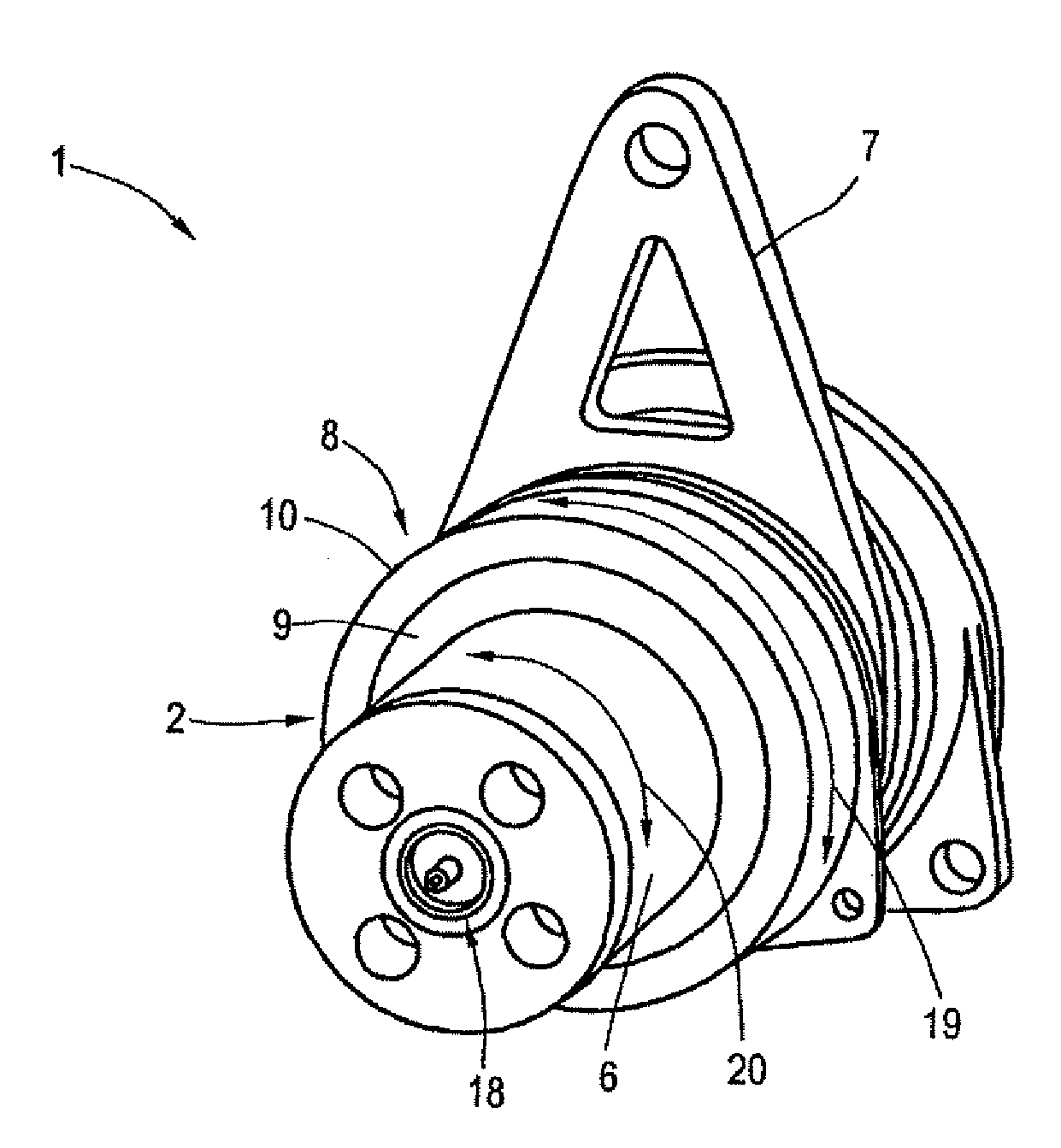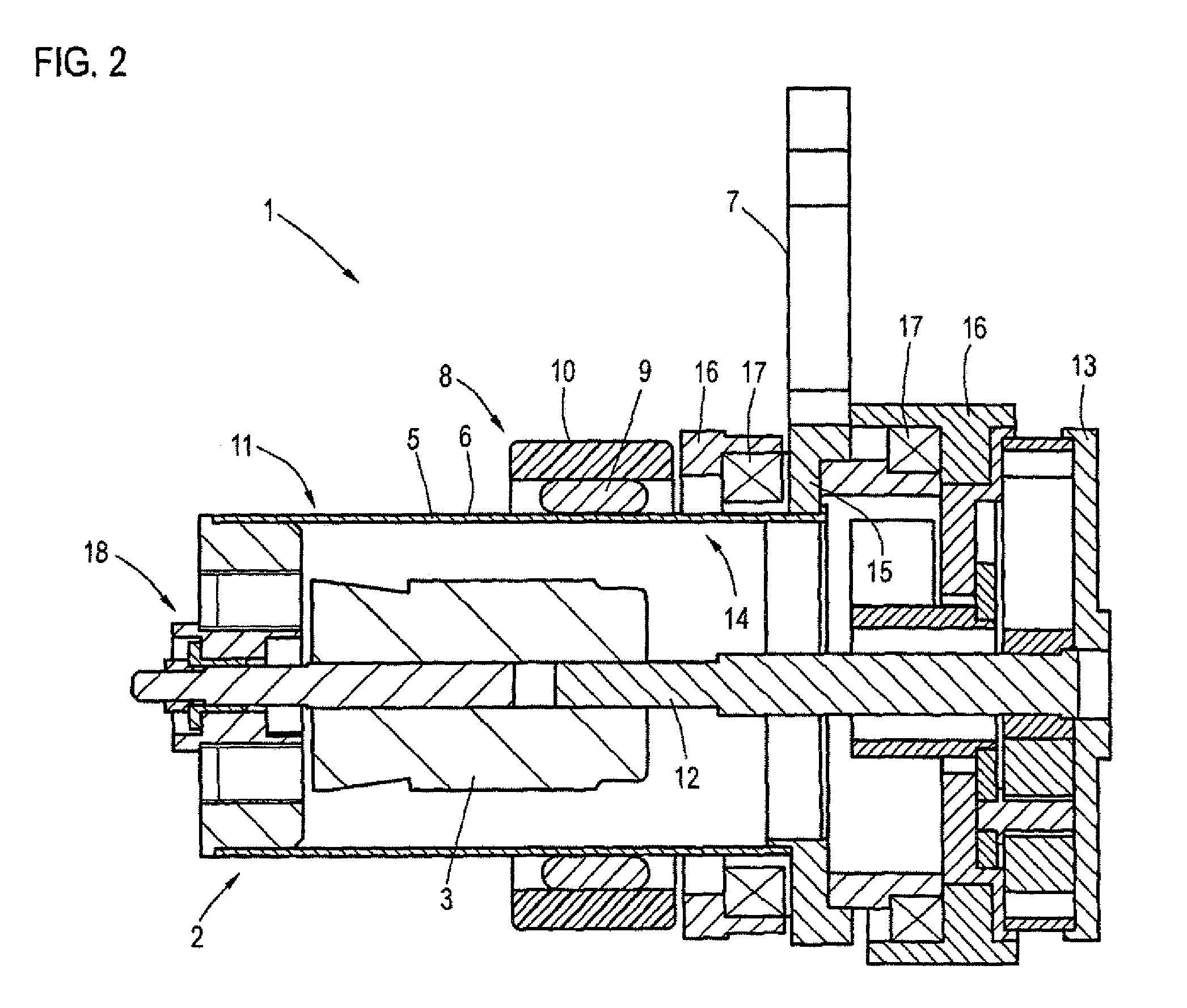Rotary damper
a damper and rotor technology, applied in the direction of shock absorbers, mechanical equipment, transportation and packaging, etc., can solve the problem of general limitation of additional measures
- Summary
- Abstract
- Description
- Claims
- Application Information
AI Technical Summary
Benefits of technology
Problems solved by technology
Method used
Image
Examples
Embodiment Construction
[0025]FIG. 1 shows a basic illustration of a rotary damper 1 according to a first exemplary embodiment by way of a sectional view. The rotary damper 1 is installed within a wheel well of a motor vehicle (not shown) and includes a damper element 2 for damping the relative movement between a first mass, disposed on the wheel-suspension side, and a second mass, disposed on the vehicle-body side. The damping element 2 may be designed, for example, as an electric or hydraulic damper.
[0026]The damping element 2 has a fixed first damper part 3 and a second damper part 5 mounted rotatably relative thereto via bearing elements 4 to generate a damping force. The first damper part 3 may also serve as housing 6 of the damper element 2. The housing 6 and the damper parts 3, 5 have each a hollow-cylindrical shape. The second damper part 5 is connected via a lever element 7 (articulated lever) which can be moved or pivoted by the mass movement and is connected to the first mass. The lever element ...
PUM
 Login to View More
Login to View More Abstract
Description
Claims
Application Information
 Login to View More
Login to View More - R&D
- Intellectual Property
- Life Sciences
- Materials
- Tech Scout
- Unparalleled Data Quality
- Higher Quality Content
- 60% Fewer Hallucinations
Browse by: Latest US Patents, China's latest patents, Technical Efficacy Thesaurus, Application Domain, Technology Topic, Popular Technical Reports.
© 2025 PatSnap. All rights reserved.Legal|Privacy policy|Modern Slavery Act Transparency Statement|Sitemap|About US| Contact US: help@patsnap.com



